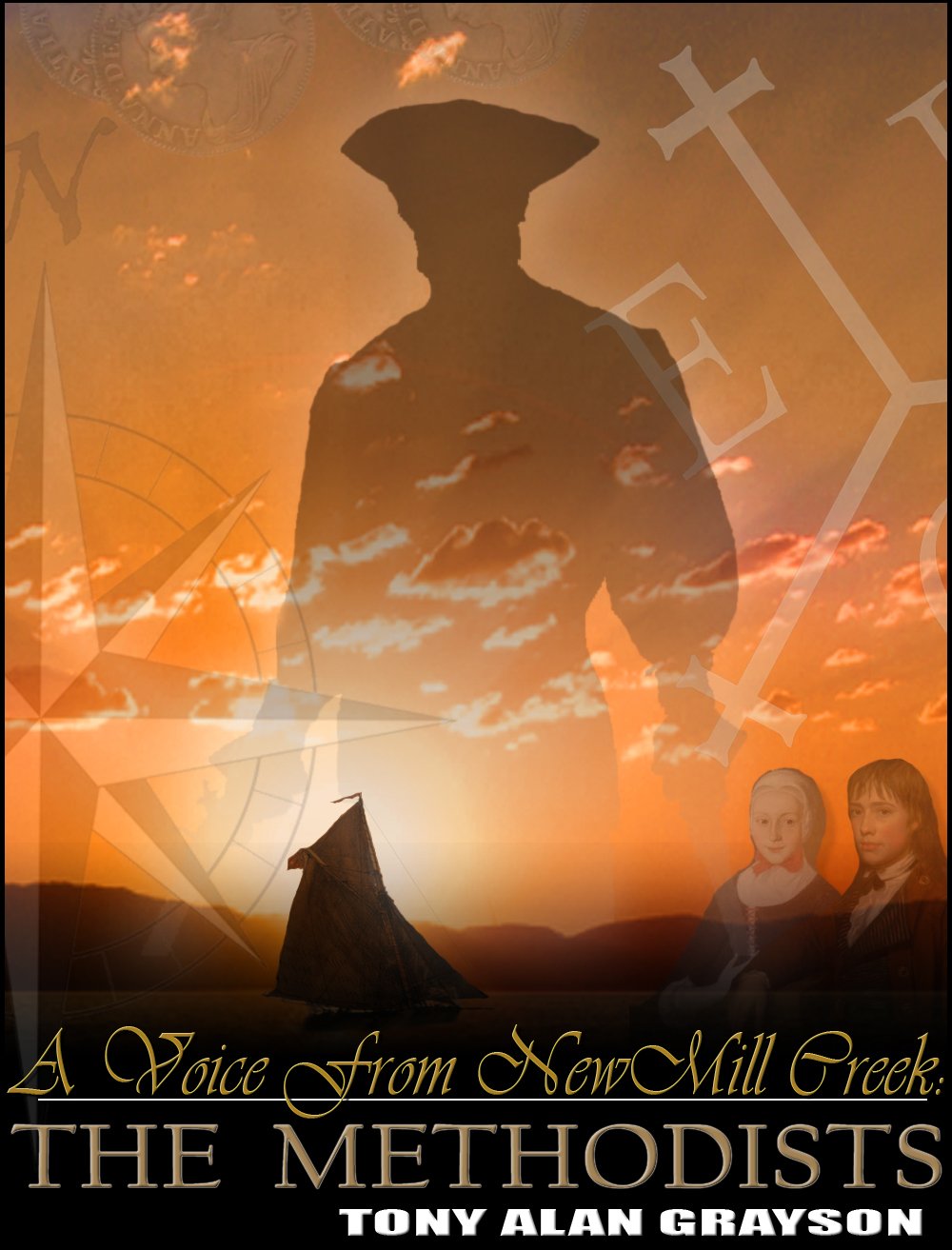
A Voice from New Creek Mill: The Methodists
A Voice from New Creek Mill: The Methodists is the first of
a series from author Tony A. Grayson and is part historical and part fiction.
It tells of the early days and spread of The Method; a form of Anglicanism
first envisioned by John Wesley and George Whitefield and its initial spread
from England to the young colony of Virginia. The reader gets to witness the
journey of The Methods’ leaders, the political and social obstacles surrounding
its growth and sees its manifestation on the ground in the form of its young
supporters; Willis Wilkins and Sharon-Ann Haynes. The struggles of young love
and duty to faith are brought into real focus in this story but are certainly
not the only tales we hear about. Clashes with mysterious Aboriginals and
political intrigue between pirate captains round out the first of four planned
books in this series.
When reading the introduction to Graysons book, it seems as
if he has done a wealth of research about the area and the people involved in Methodism
however Grayson stresses that this book is still a work of fiction. Regardless
of how you classify the book, it is an interesting read. The book starts with
what we could classify as one of the “Main” characters but very quickly shifts
to a history lesson on John Wesleys’ beginnings in dissention to some key
Anglican ideas. The chapters loosely try to stick to a subject, like the story
of Sharon-Ann following her family from England to Virginia to help establish
The Method or the saga of Augustus Snuke navigating the pirate world of his
cousins’ domain. Occasionally history lessons tended to spring up within these
chapters, and often the transition was not a seamless one. The descriptions of
the political and religious climate Methodism was born into was valuable to
understand the story, but I found that it dramatically cut up the rest of the
book and felt awkward.
Another slightly problematic issue that popped up was the
character of Elise LaBash, a young woman vying for the attentions of a male
suitor. Grayson created this character to be very real; A beautiful girl who
struggles with what is expected of her and what she wants to do, however
Grayson also seems to paint her and her mother as somewhat of a charicature,
indicated that Elise’ beauty is a powerful tool to get what she wants out of
men. While I can understand this troupe being used, in this case Grayson takes
it further and alludes to Elise almost having supernatural sway over men, and I
do not think it is too much to suggest Grayson considers beauty to be a super
power. The feminist in me had some revulsion at this, not only that this
implies a young man will lose control when confronted by a pretty girl but also
that pretty girls are only concerned with using their beauty to get what they
want. After finishing the book however I feel that this was not Grayson’s
intent, but that he merely wanted to demonstrate the very real issues of youth.
The main characters all have their problems; they would not
be interesting if they didn’t, but what I love is that Grayson has really
bridged the gap between the modern world and the world of the 18th
century. Even though 300 years separates us, the problems these characters
faced as still ones we grapple with today. Questions of love versus lust, our
true purpose and whether or not we are fulfilling it, the transition from child
to adult are all things we still struggle with and it is very refreshing to see
a novel set in a historical period remind us that these are human problems and
they are not new to us.
This book ends with some happy stories, some sad ones and
more importantly with tantalizing hints at what is to come with the next book,
and even better still for those of us with a curious nature Grayson has also
added a bibliography at the end where those interested in the non-fiction part
of his work can go to follow in his research.
Where to buy this book: http://www.amazon.ca/gp/product/B00988NC2S?keywords=a%20voice%20from%20new%20creek%20mill&qid=1445206517&ref_=sr_1_1&sr=8-1
Tony A. Graysons’ Website: https://www.facebook.com/tony.grayson.752
and you can see his other work here http://graysonta84.wordpress.com/
and here http://ezinearticles.com/?expert=Tony_A_Grayson
No comments:
Post a Comment